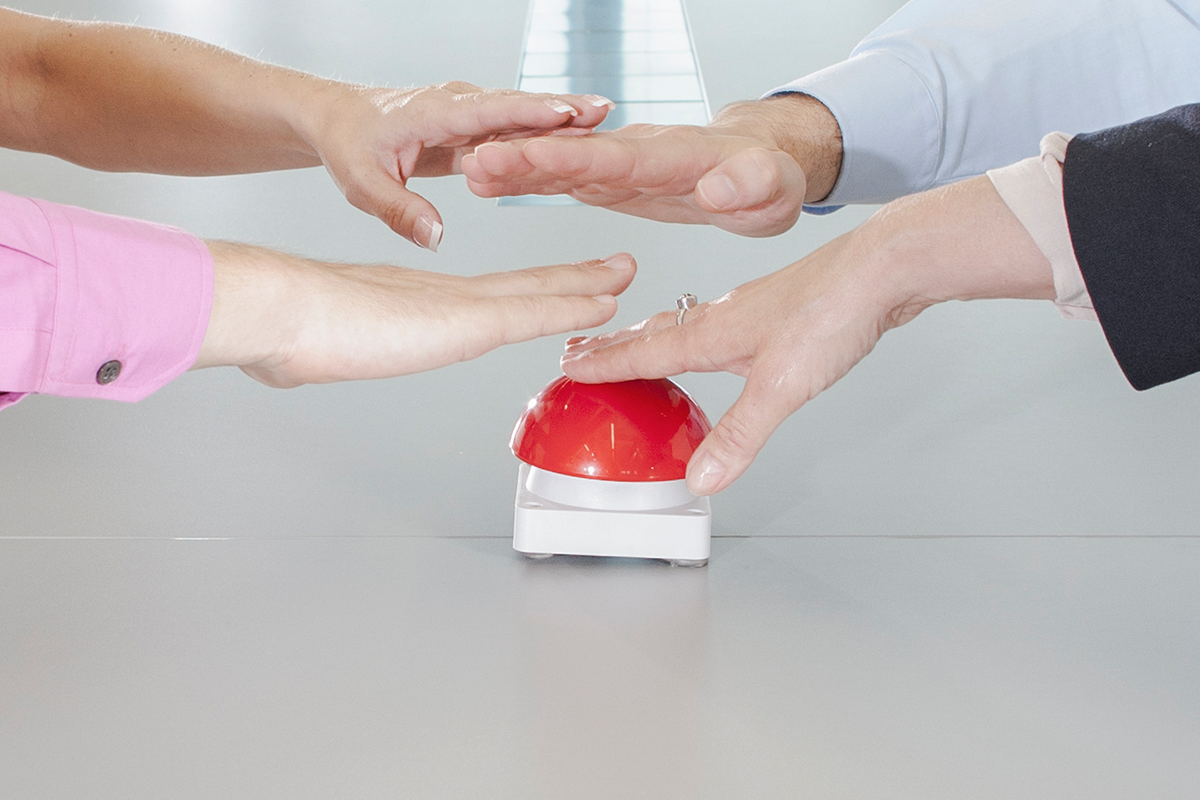For the past nearly 39 years, I have been in the public safety sector: 34 years in law enforcement and the past 5 years in the school safety sector (both public and private). During that time I have looked to solve the actual problem of school safety, and have been looking at this from a holistic perspective. This is how I looked at the panic buttons when they came into vogue after the Parkland High School tragedy.
Panic buttons have been around for years. So what is the big deal and why now? I have to be honest, I was not a real fan of them until recently. Let me tell you why. Panic buttons are believed to be the answer to our safety problems. We believe that if we push the panic button, everything will be taken care of and we will all be safe. The reality is that panic buttons have some very limiting factors: they are limited to triggering a call for help and sending an alert for a specific type of situation; they lack the specificity of what is going on and what is needed to resolve the situation; they limit the ability to communicate with the sender of the “panic” to learn what is going on or if they have specific needs. It has been my experience that it was an all-or-nothing scenario. We all know there is much more to responding to and managing an emergency than just pressing a panic button and waiting for someone to come save us. If you don’t understand that, then please visit our podcast and blog series; Coffee with Kelly; A Discussion on School Safety. In addition to notifying first responders, we have to get people to a safe place; we have to attend to those who were injured; we have to account for our students and staff; we have to communicate with them and the parents of those affected by the incident; etc.
So if we have to do all of this and the panic button has its limitations, why did I come around? There are many reasons why I came around to accepting the panic button as a “viable” option. First, let me be perfectly clear; a panic button is NOT a complete solution, but it does fit into being the first step for a complete solution when tragedy comes knocking at our doors. So here are the primary reasons we should look at panic buttons as part of our overall solution:
- Frankly, even with all of its limitations (we will talk more about what is now available) many states are jumping on the bandwagon to mandate the use of panic buttons to contact 9-1-1 quickly while providing a verifiable location of the sender.
- In all reality, panic buttons are easy to use. While training is still needed to learn what else needs to be done, many panic button solutions are plug-and-play, making you safer relatively quickly.
- With advancements in technology, some companies can now integrate a panic button into their current solutions to give you the most complete solution available.
- The panic button provides a simple way to trigger an alert, which allows for better adoption of other solutions should they be required.
- Panic buttons, when integrated with other solutions, provide the best opportunity to ensure 100% of those who need to receive the alert and other critical information (dynamic maps, checklists, accounting for people, integrations with other existing safety systems, full real-time orchestrations, communications during the response, ETC.) and get it in the manner in which they prefer.
There are now panic buttons for all levels of participation:
- Hard mounted button: perfect for those who are working in an office setting with a workstation where they spend most of their work hours; Main office staff at the district or at the building level, librarians, counselors, deans, medical staff, IT staff, HR, Administrators, district personnel, etc.
- Wearable button: this is the solution for those who move about the office and/or campus frequently; teachers, yard duty staff, those who monitor the student drop-off and pick-up activities, event staff at the ticket booths, janitors/custodians, etc.
- Next Generation Panic Buttons [Push-to-Talk over Cellular (POC)]: The use of “POC” two-way communications with an integrated panic button. This allows the user to press the panic button and also communicate directly with the safety teams to provide specificity related to the actual problem and what is actually needed. This solution is for those who move about frequently and have a higher level of responsibility for the safety and security of your campus and events: Safety Team members, district-level safety teams, event staff responsible for the safety and security of the event, incident management teams, those involved in activities that are likely to produce injuries (sporting events, practices, field trips, etc.), SROs, etc.
- Mobile Next-Gen Panic Button (POC): This solution involves installing a ”Vehicle Kit (VK)” in a vehicle that you insert the POC device into to make it similar to a traditional two-way radio. This is the solution for those who use vehicles in the course of their duties; bus drivers, coaches, club and special interest group leaders, teachers who travel with their students on field trips, etc. In addition to the “radio” capabilities for normal communication during the day, the operators of these vehicles have the ability to press the panic button in an emergency. They also have the ability to remove the POC from the vehicle kit to evacuate the vehicle should that be necessary, and they will have all the functionality of the Next Generation Panic Button with all of the POC capabilities.
Ah Ha Moment: We now have a panic button for every level of participation. From the support staff to the teachers, to the safety team, to the bus drivers, everyone is now covered. While I believe Alyssa’s Law is needed, it falls a little short of what is necessary to have a complete solution. That being said, with the new technology available to us, we can provide a solution to meet everyone’s requirements and still be Alyssa’s Law compliant.
Trigger: Understanding the purpose and functionality of panic buttons is important for us. With the exception of some of the apps available, the traditional panic buttons are a simple “button” that alerts people of an emergency. In the current context of Alyssa’s Law, this button is required to alert people of the emergency, connect directly to 9-1-1, and give the sender’s location. But that only solves part of the problem. As we press the panic button, we have to ask ourselves what do we have to do next? This is where the integration of the applications and the correct panic buttons can add a significantly higher level of value to the panic button market. After pressing the button, we still have many tasks that need to be completed: EPA, two-way communication, accounting for students and staff, providing updates, passing on instructions and next steps to staff, checking on the status of those involved, reunification, etc. In these cases, the panic button is more like the triggering device than it is an emergency solution to make us safer. It reduces the time to notify first responders, but doesn’t assist with all the other emergency tasks that we are required to complete. The current solution allows us to accomplish all of those additional necessary tasks.









.png)


No Comments Yet
Let us know what you think